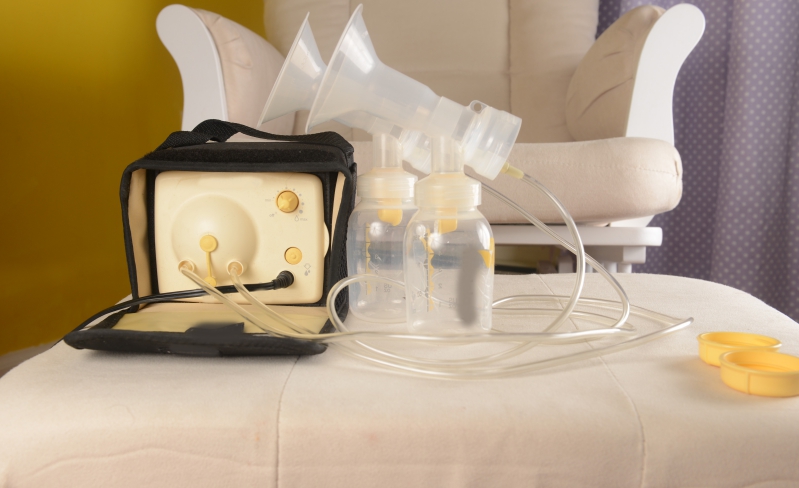
Scholar argues that lactation policies need to do more to protect parents’ rights.
Should parents be allowed to express milk in public?
Some commentators suggest that chestfeeding is a private activity, deserving of few public protections. But in a recent article, law professor Mathilde Cohen urges lawmakers to enact comprehensive legal protections for public lactation and other forms of milk expression, such as by a pump or by hand.
Cohen argues that lactation law and policy is still a far cry from what many parents need. Current law helps cisgender, white, middle-class women, she argues. It does not realistically accommodate milk expression by parents with other identities, such as parents who are incarcerated, parents with disabilities, and parents who are students.
The first federal legislation to protect lactation, Title VII of the Civil Rights Act of 1964, prohibited sex-based discrimination against female employees that breastfed or expressed milk. And in 2010, the Affordable Care Act (ACA) amended the Fair Labor Standards Act to mandate that health insurance plans must cover the cost of breast pumps and workspaces must provide break time to express milk.
In recent years, the federal government has taken further steps. In 2019, Congress passed the Federal Employee Paid Leave Act, offering approximately 2.1 million federal workers twelve weeks of paid parental leave.
Last year, a group of U.S. Senators proposed new legislation, entitled the Providing Urgent Maternal Protections (PUMP) for Nursing Mothers Act. This bipartisan bill, which targets workers not protected by previous measurers, would provide salaried employees with a “reasonable” break time and private place to pump human milk. The bill also would require employers to pay employees their hourly wage for the time they spent expressing milk while at work.
But despite existing legislation and even new legislative proposals, many of the lactation laws remain symbolic and difficult to enforce, argues Cohen. In addition, different techniques for feeding continue to be seen as protected only in different contexts—for example, chestfeeding in public and expressing milk at work, but not vice versa.
Cohen reasons that every person should have the right to decide whether and how to lactate and should be provided with consistent access to safe and dignified environments in which to do so. Even when lactation rooms are present, they tend to be tiny, under-maintained spaces, notes Cohen.
As other scholars have remarked, employers may choose to create a relatively low-cost space to situate lactating parents in the workplace rather than investing in more progressive initiatives such as longer parental leave or on-site childcare.
In addition, Cohen argues that vulnerable and stigmatized parents suffer the most from the lack of affirmative support and protections. Absent adequate space, many parents may not be able to chestfeed, even if they wish to do so. Cohen stresses that insufficient protections exist for parents who are incarcerated or are students, along with parents with disabilities.
For example, Cohen argues that when individuals who are incarcerated lack lactation protection, they are deprived of parental autonomy, reinforcing health disparities in maternal and infant health. And although a growing number of U.S. state prison systems have adopted policies permitting inmates to express milk, federal legislation has failed to incorporate the Bangkok Rules—the United Nation’s minimum standards for the treatment for incarcerated women.
High school and higher education students also need more lactation protections, urges Cohen. Too often, Cohen says, teen pregnancy is perceived as a “problem” to eradicate, rather than a vulnerable group needing public support.
Current law does little to help, argues Cohen. The ACA requires educational institutions to provide lactation breaks and rooms for employees, but it does not extend such coverage to students. And unlike employees, students often do not have access to a private space or a refrigerator to store their milk. In 2013, the U.S. Department of Education recommended that schools provide a designated private room “for young mothers to breastfeed, pump milk, or address other needs related to breastfeeding during the school day,” but this guidance has not been widely followed.
Lactation laws and policies also fail to acknowledge the unique needs of parents with disabilities, notes Cohen. Parents with disabilities may face additional obstacles such as disability-related health conditions, limited expert information, heightened discomfort, and unavailability of suitable equipment. In addition, parents with disabilities are more likely to be of low-socioeconomic status and lack health insurance—further limiting their access to lactation support. Breast pumps and lactation rooms are usually not designed with disability in mind and may not be compliant with the Americans with Disabilities Act, according to Cohen.
Cohen concludes that, until regulation protects parents who are marginalized, the United States will continue to fail to provide a safe and accessible environment in which all parents can feed their children the way they choose.



